Themed collection Functional Supramolecular Photochemistry

Photochemistry in a capsule: controlling excited state dynamics via confinement
The free space within an organic capsule following the occupation by the guest can be exploited to control the dynamics of molecules on excited state surfaces. The extent and shape decide the observed selectivity.
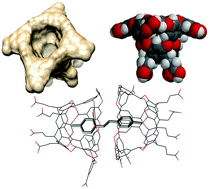
Chem. Commun., 2022,58, 6571-6585
https://doi.org/10.1039/D2CC01758J
Manipulating excited state reactivity and selectivity through hydrogen bonding – from solid state reactivity to Brønsted acid photocatalysis
This feature article highlights the role of different hydrogen bonding templates in enhancing and controlling excited state processes with an eye towards the development of Brønsted acid mediated organo-photocatalysts for asymmetric photochemical transformations.

Chem. Commun., 2022,58, 1871-1880
https://doi.org/10.1039/D1CC06128C
Artificial light-harvesting systems based on macrocycle-assisted supramolecular assembly in aqueous media
This Feature Article will discuss the fabrication of light-harvesting systems based on water-soluble macrocycles, such as cyclodextrins (CD), pillararenes (PA), calixarenes (CA), cucurbiturils (CB), and other macrocycles.
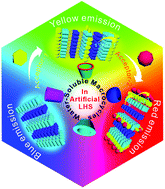
Chem. Commun., 2021,57, 13641-13654
https://doi.org/10.1039/D1CC06011B
Polyamine receptors containing anthracene as fluorescent probes for ketoprofen in H2O/EtOH solution
Triamine-based receptors containing 2 anthracene units are able to signal ketoprofen in H2O/EtOH solution via fluorescence emission enhancement, exploiting a proton transfer process upon substrate coordination.

Chem. Commun., 2022,58, 7022-7025
https://doi.org/10.1039/D2CC01107G
Circularly polarized luminescence from helical N,O-boron-chelated dipyrromethene (BODIPY) derivatives
We report N,O-boron-chelated dipyrromethene derivatives exhibiting circularly polarized luminescence (CPL) in the red/near-infrared region, with enhanced |glum| values from 10−4 in solutions to 10−2 in aggregate states.

Chem. Commun., 2022,58, 3807-3810
https://doi.org/10.1039/D1CC06051A
Coexistence of 1 : 1 and 2 : 1 inclusion complexes of indigo carmine
We show that the optical properties of indigo carmine can be modulated by encapsulation within a coordination cage.

Chem. Commun., 2022,58, 3461-3464
https://doi.org/10.1039/D1CC07081A
A carboxylatopillar[5]arene-based pH-triggering supramolecular photosensitizer for enhanced photodynamic antibacterial efficacy
A pH-triggering supramolecular antibacterial photosensitizer, constructed by host-guest interaction between porphyrin photosensitizer and carboxylatopillar[5]arene, not only improves the biocompatibility of the photosensitizer, but also enhances antibacterial efficacy under the low pH bacterial microenvironment.
![Graphical abstract: A carboxylatopillar[5]arene-based pH-triggering supramolecular photosensitizer for enhanced photodynamic antibacterial efficacy](/en/Image/Get?imageInfo.ImageType=GA&imageInfo.ImageIdentifier.ManuscriptID=D1CC06116J&imageInfo.ImageIdentifier.Year=2022)
Chem. Commun., 2022,58, 2991-2994
https://doi.org/10.1039/D1CC06116J
Probing a microviscosity change at the nematic–isotropic liquid crystal phase transition by a ratiometric flapping fluorophore
Flapping ratiometric fluorescent probe (FLAP) monitors a small change in microviscosity during the phase transition of the 5CB nematic liquid crystal.

Chem. Commun., 2022,58, 2128-2131
https://doi.org/10.1039/D1CC06111A
Supramolecular gating of TADF process in self-assembled nano-spheres for high-resolution OLED applications
Supramolecular engineering is employed to spontaneously generate sub-micron-sized vesicles from TADF chromophores for OLED applications.
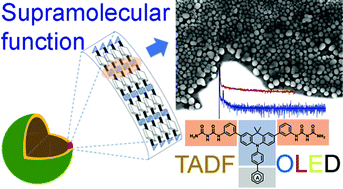
Chem. Commun., 2022,58, 1163-1166
https://doi.org/10.1039/D1CC06120H
Ultrafast dynamics of an azobenzene-containing molecular shuttle based on a rotaxane
Excited state dynamics of a rotaxane-based molecular shuttle were examined using femtosecond time-resolved spectroscopy. Results suggest two energetic barriers in the excited state along the isomerization coordinate precede the shuttling motion.
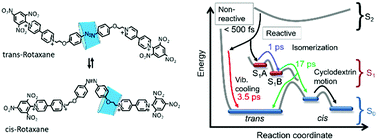
Chem. Commun., 2022,58, 961-964
https://doi.org/10.1039/D1CC06093G
A self-assembled subphthalocyanine-based nanophotosensitiser for photodynamic therapy
A novel amphiphilic subphthalocyanine can self-assemble into spherical nanoparticles in water, which can be internalized by cancer cells and activated upon disassembly causing high photocytotoxicity.

Chem. Commun., 2022,58, 669-672
https://doi.org/10.1039/D1CC05977G
Robust and color-tunable afterglows from guanidine derivatives
Robust and color-tunable afterglows are achieved from guanidine derivative solids even in single crystals through synergistic clustering and hydrogen-bonding effects.

Chem. Commun., 2022,58, 545-548
https://doi.org/10.1039/D1CC06616A
Photo-modulated supramolecular self-assembly of ortho-nitrobenzyl ester-based alkynylplatinum(II) 2,6-bis(N-alkylbenzimidazol-2′-yl)pyridine complexes
The enhanced supramolecular self-assembly behaviors of photo-caged platinum(II) complexes have been triggered by applying light as the external stimulus.
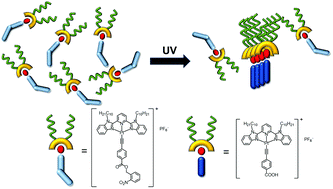
Chem. Commun., 2021,57, 13708-13711
https://doi.org/10.1039/D1CC05754E
Enantioselective recognition of chiral acids by supramolecular interactions with chiral AIEgens
Chiral AIEgens enantioselectively discriminated a series of chiral acidic compounds and amino acids by supramolecular assembly.
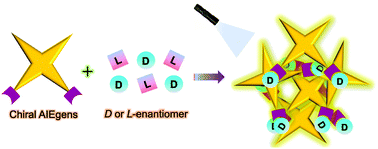
Chem. Commun., 2021,57, 13321-13324
https://doi.org/10.1039/D1CC05618B
An Ir3L2 complex with anion binding pockets: photocatalytic E–Z isomerization via molecular recognition
A photoactive Ir3L2 complex with anion recognition pockets was synthesized by self-assembly. The complex selectively activated an anionic styrene derivative toward E–Z isomerization.
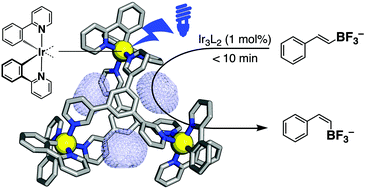
Chem. Commun., 2021,57, 9300-9302
https://doi.org/10.1039/D1CC03620C
About this collection
Guest Edited by Judy Wu (University of Houston), Yongfeng Zhou (Shanghai Jiao Tong University) and Eli Zysman-Colman (University of St Andrews), this collection highlights any supramolecular system that is photoactive, including capsules, cages, extended systems such as COFs, MOFs, zeolites, non-trivial topologies such as knots, catenanes and rotaxanes, self-assembled systems governed by coordination bonds, halogen bonds, hydrogen bonds, pi-pi interactions, Van der Waals interactions, theoretical investigations of light-induced processes in supramolecular systems. Multicomponent photochemistry is also covered, as are photochemical methods to control and study assemblies; supramolecular photocatalysis and sensing; photoactive supramolecular assemblies for electroluminescent and solar cell device, as well as theoretical investigations of light-induced processes in supramolecular systems. We hope you enjoy reading the papers in this themed collection.